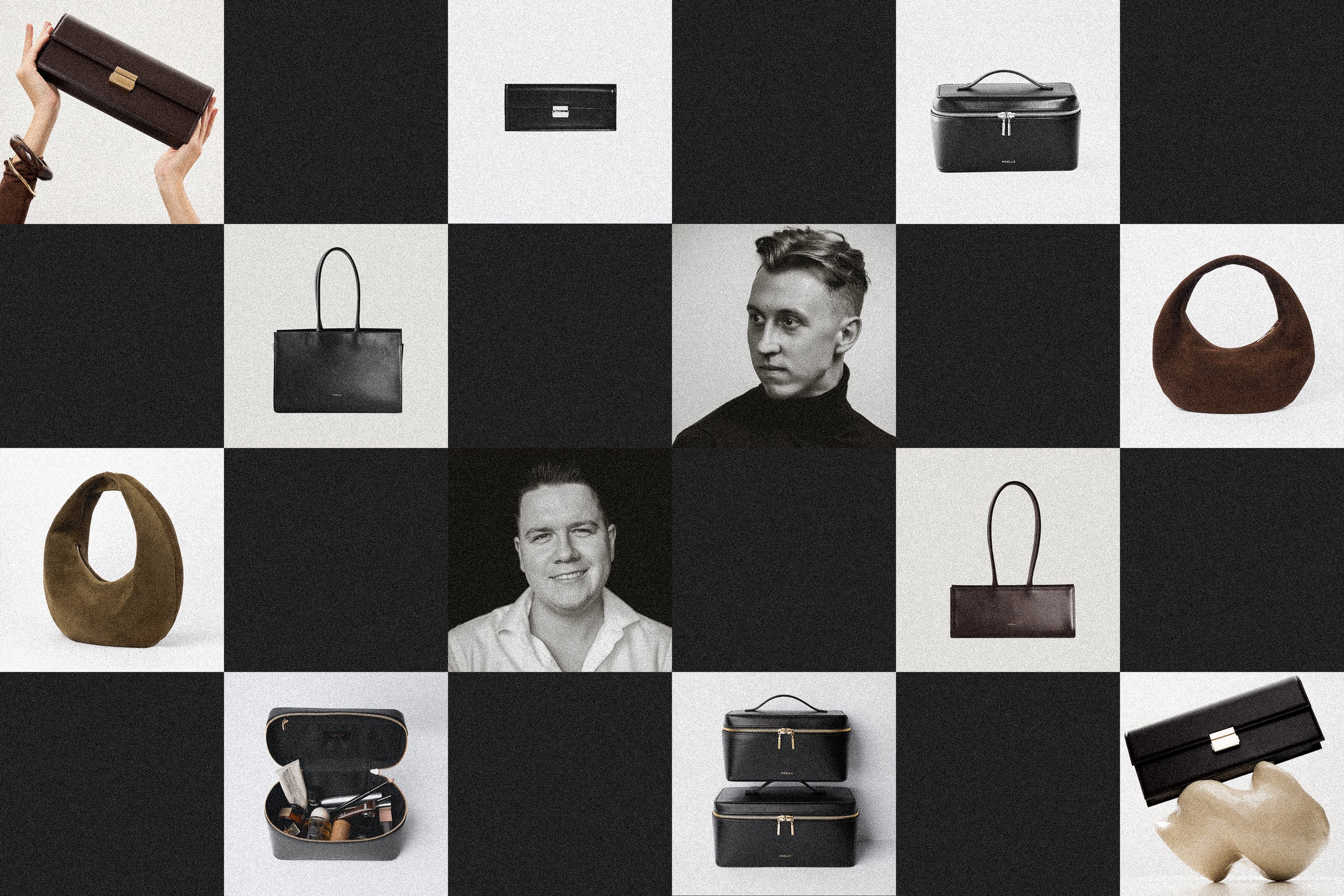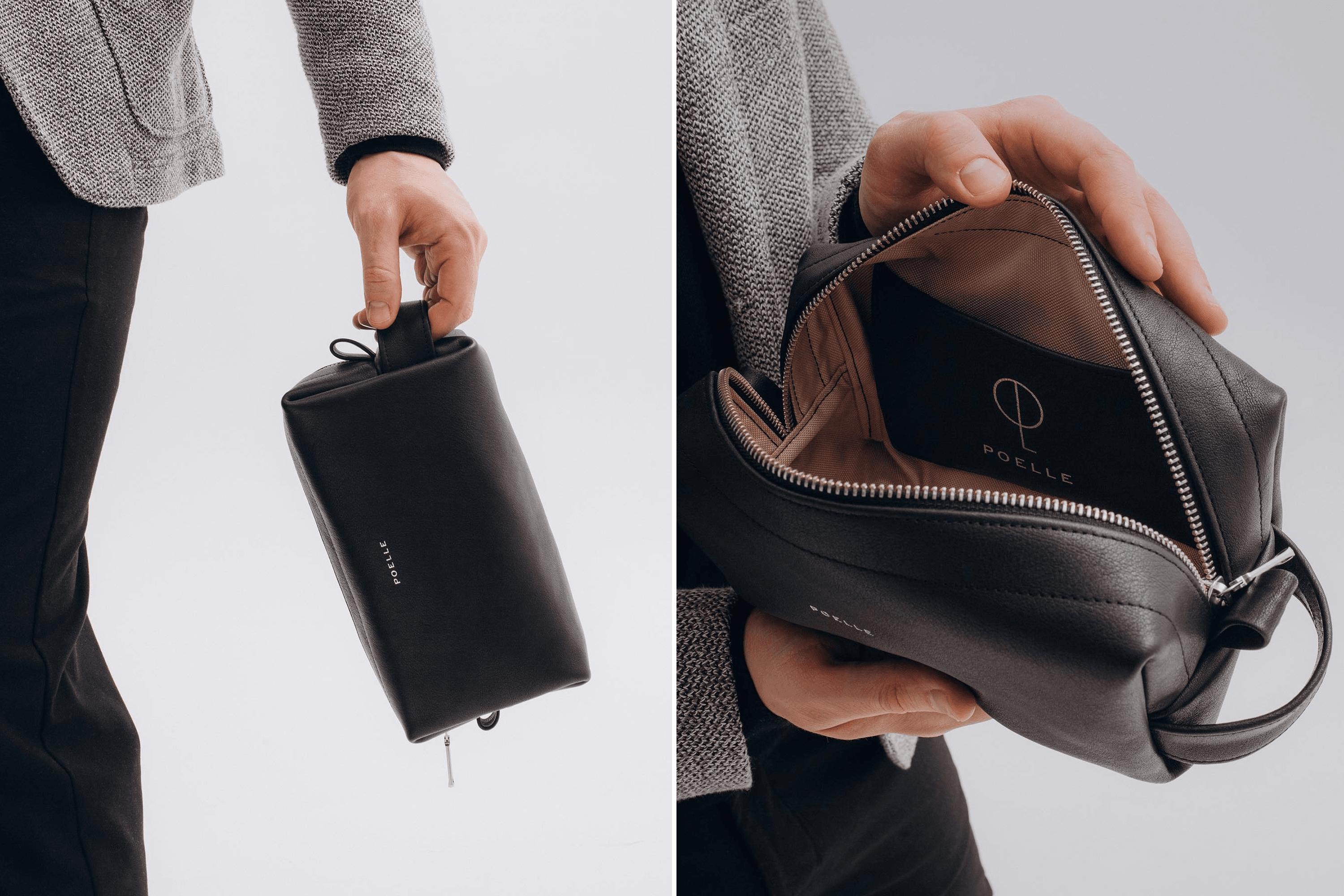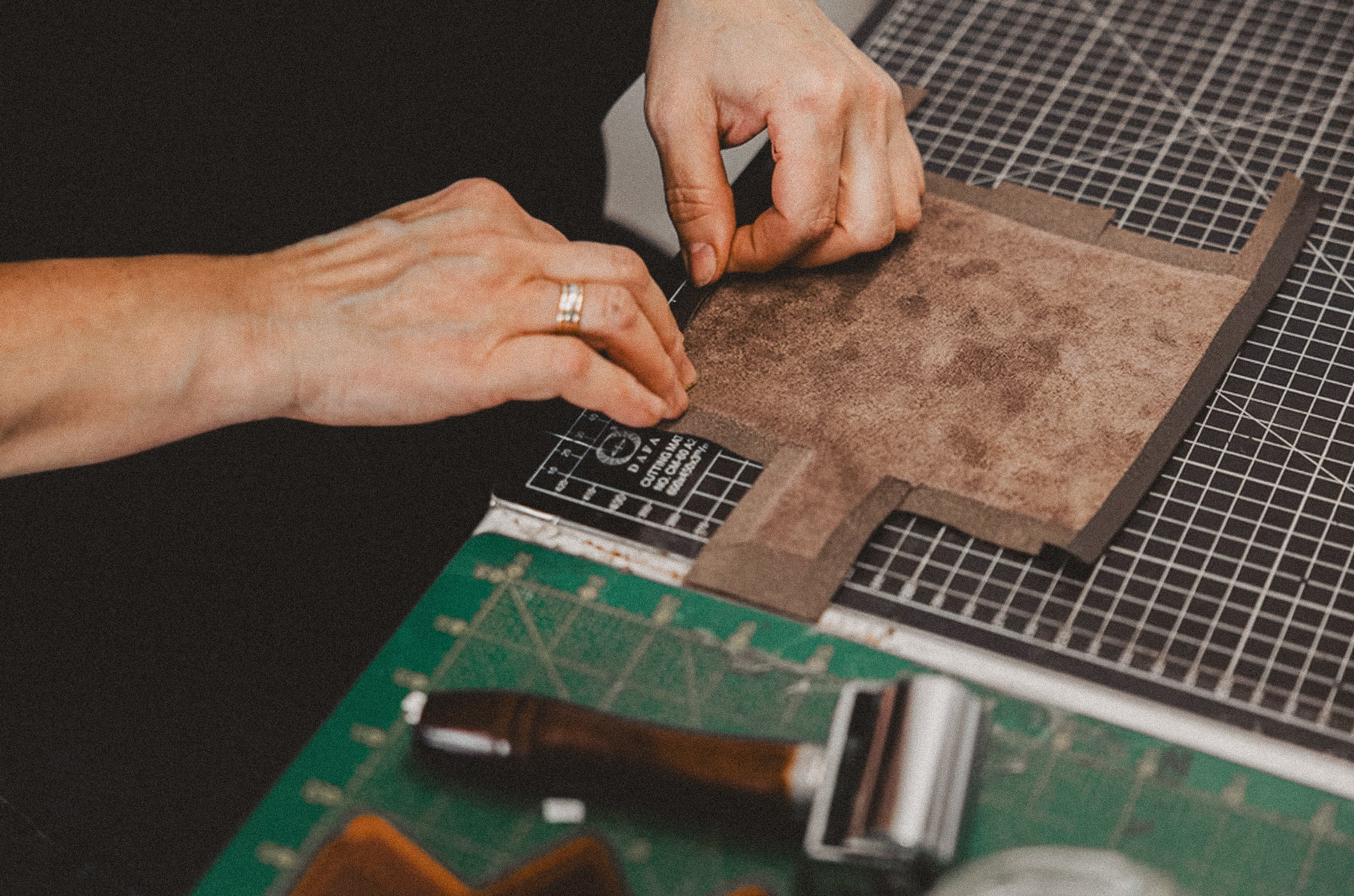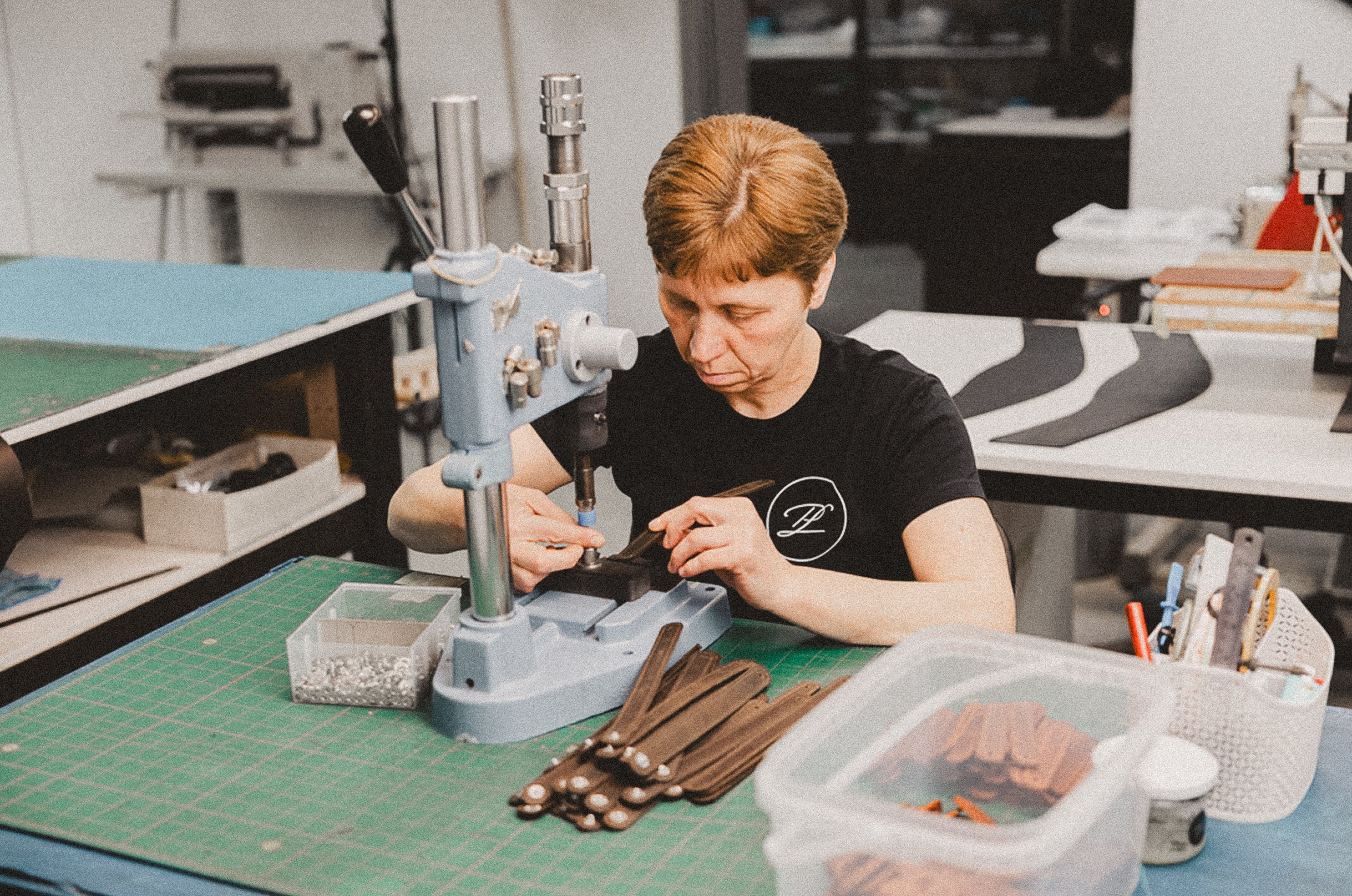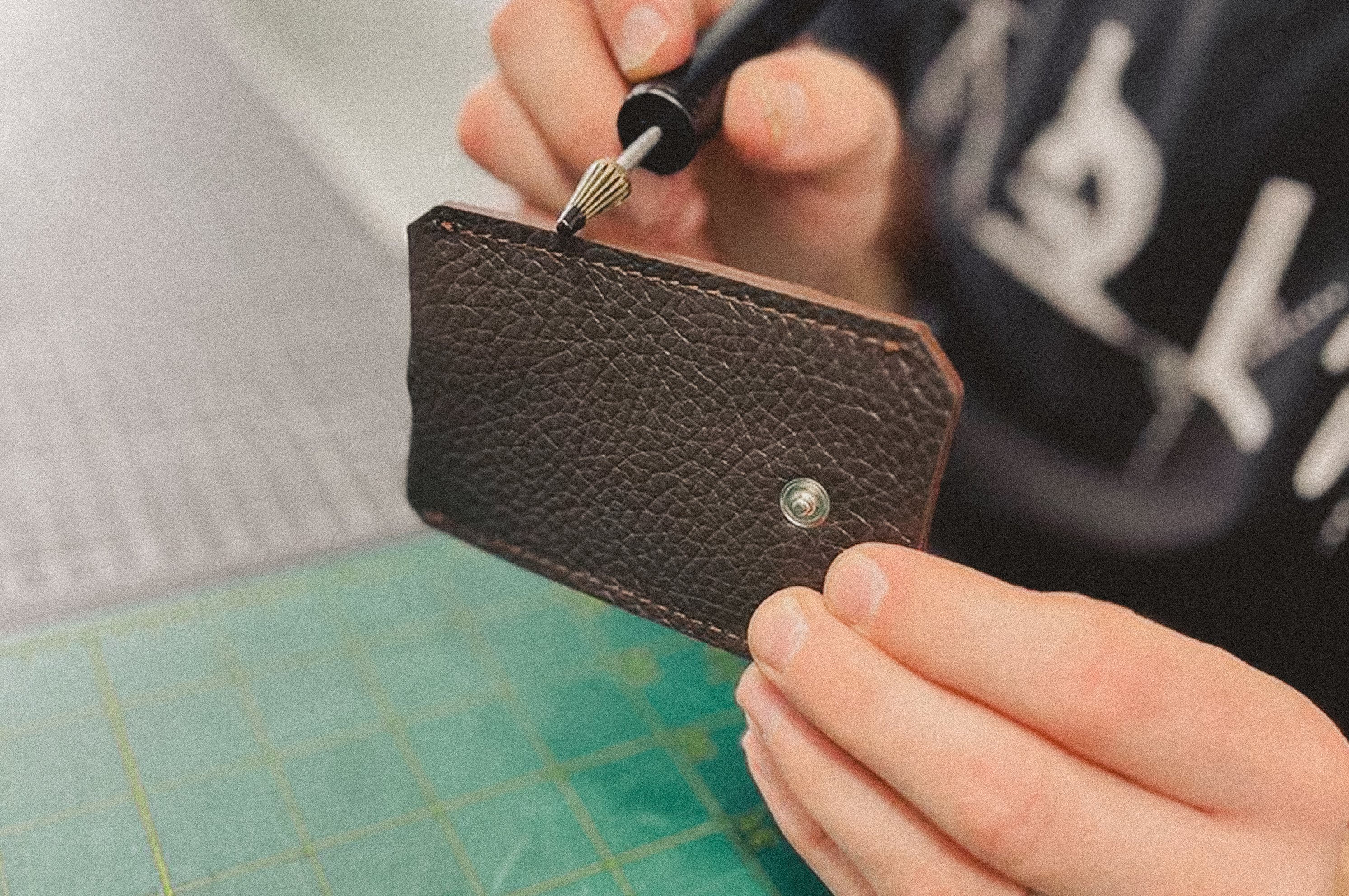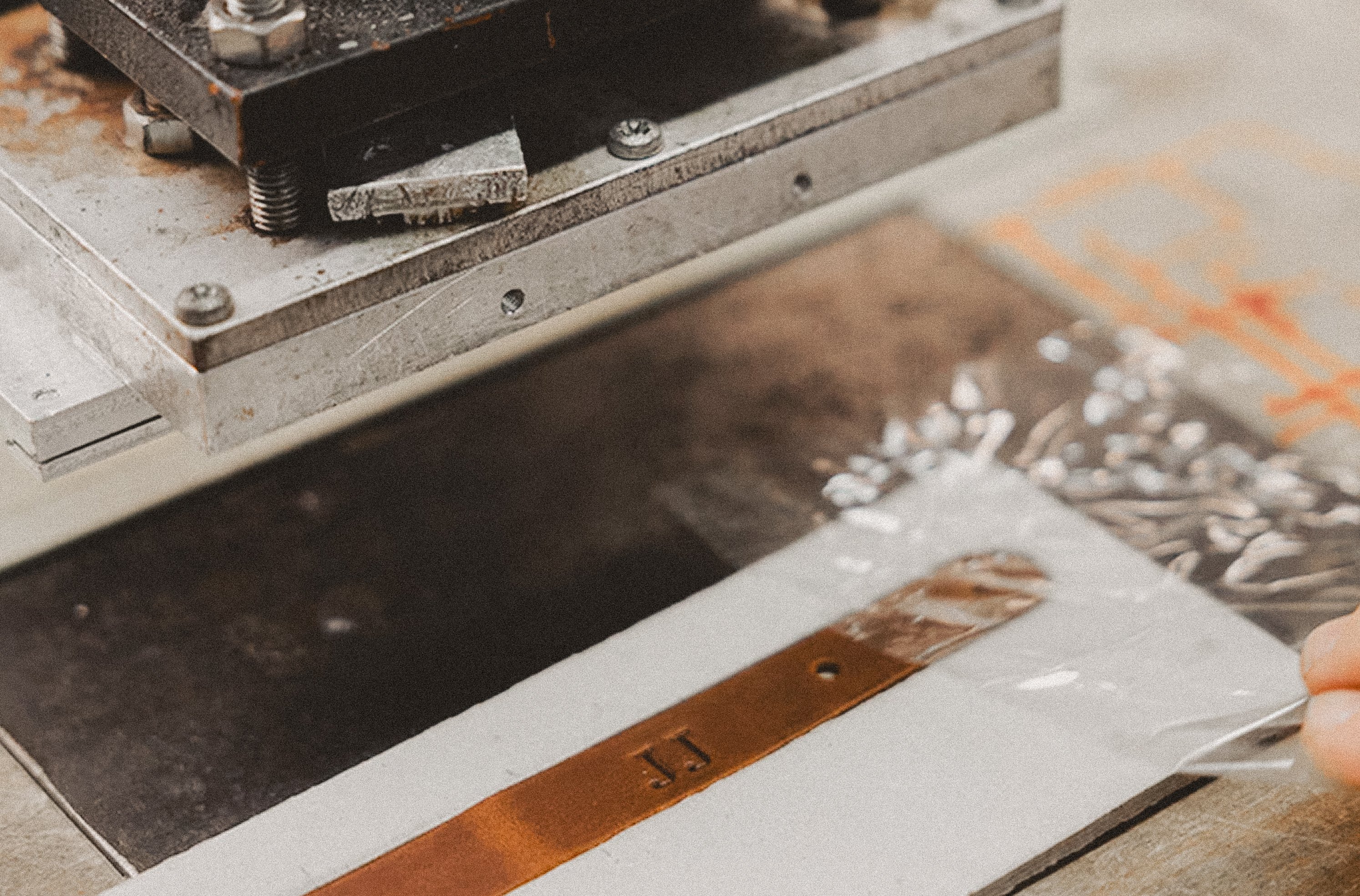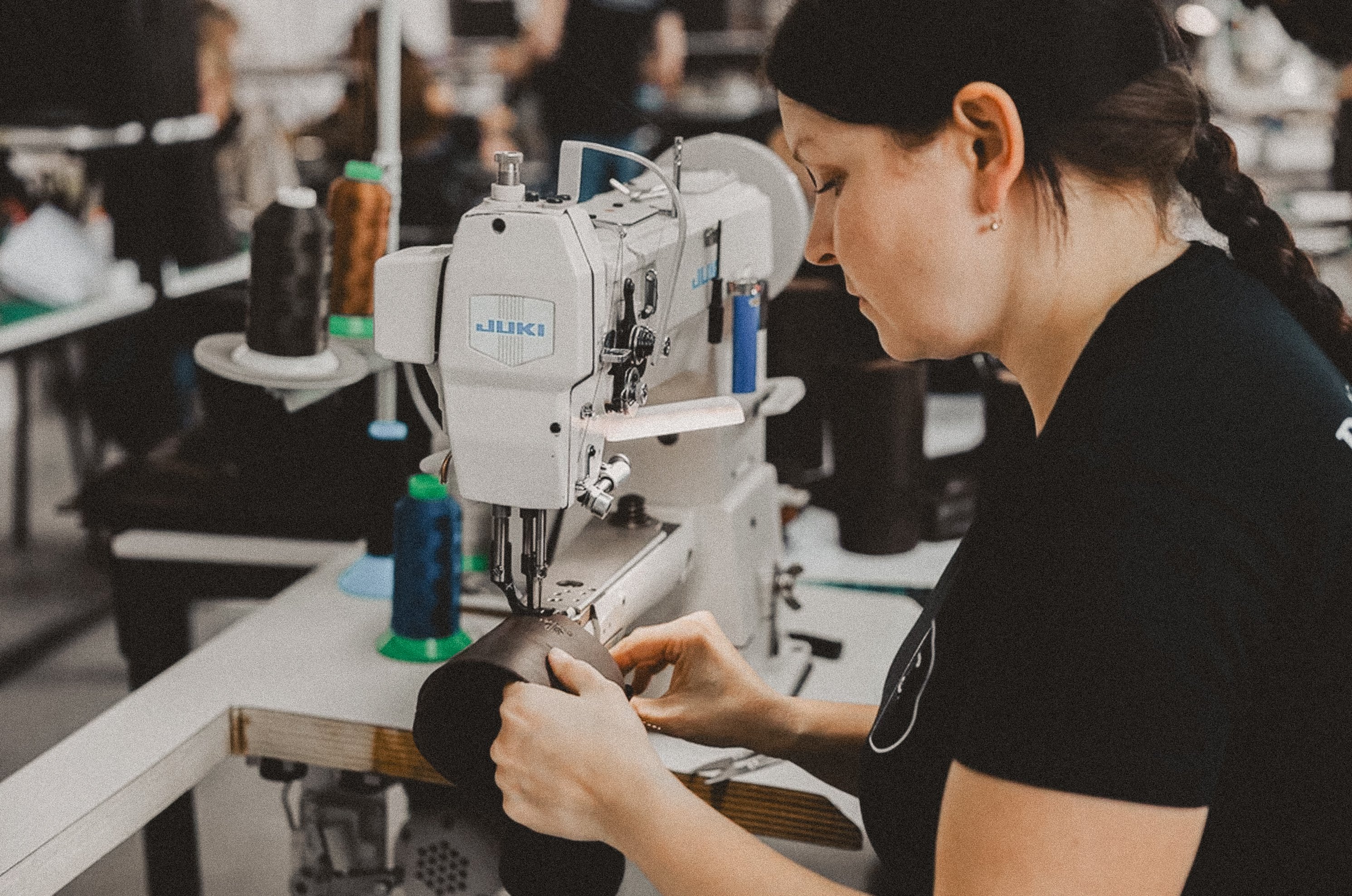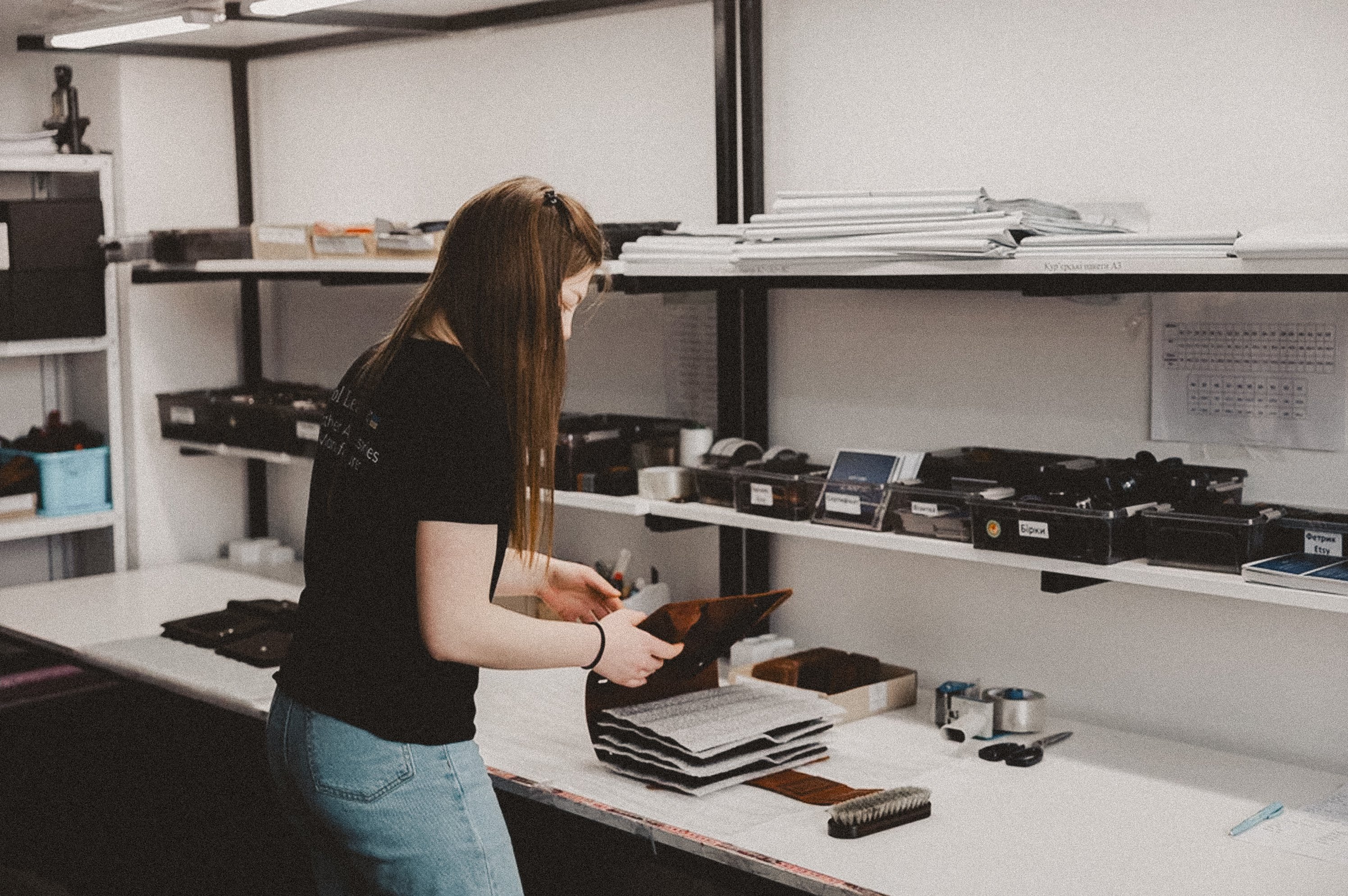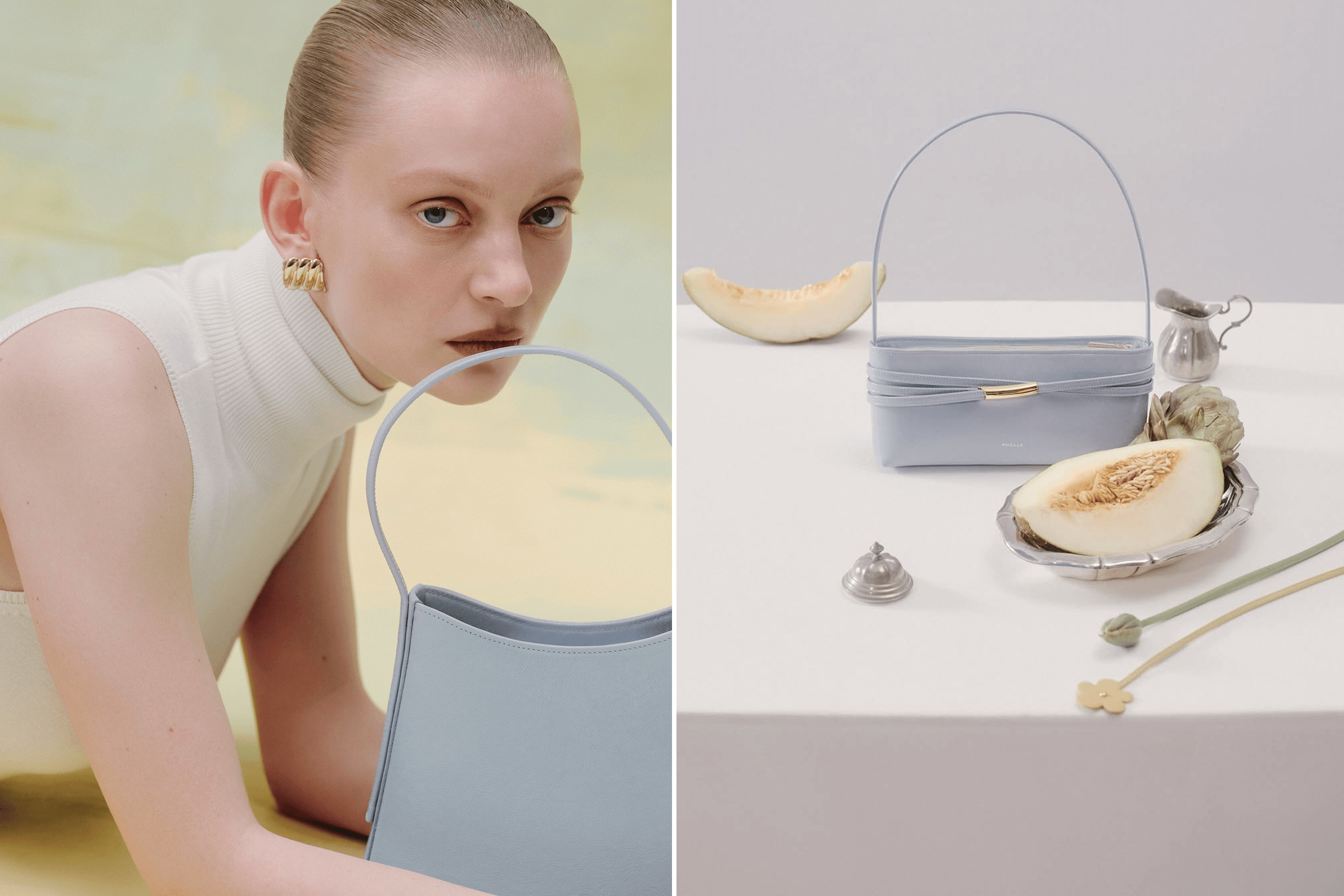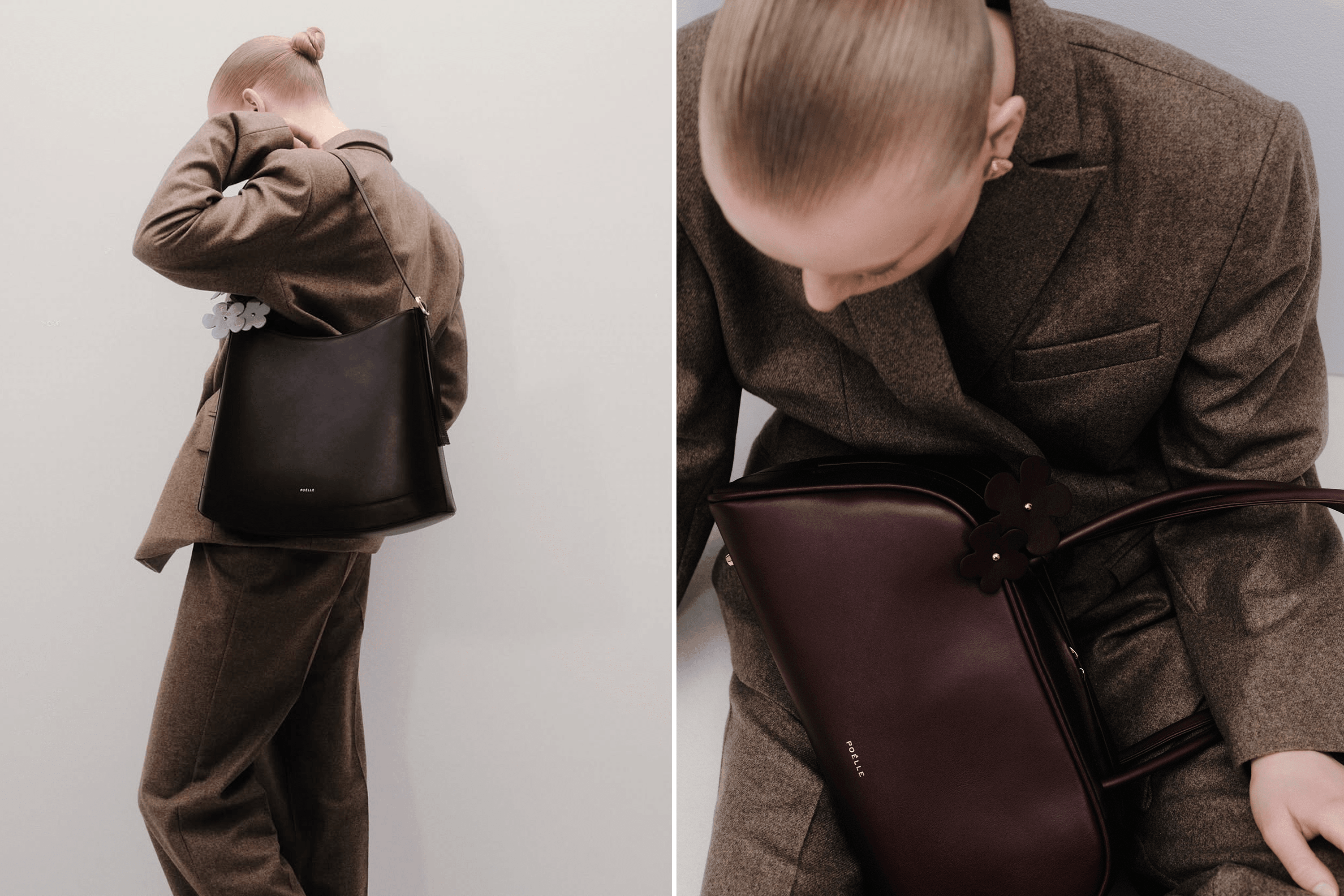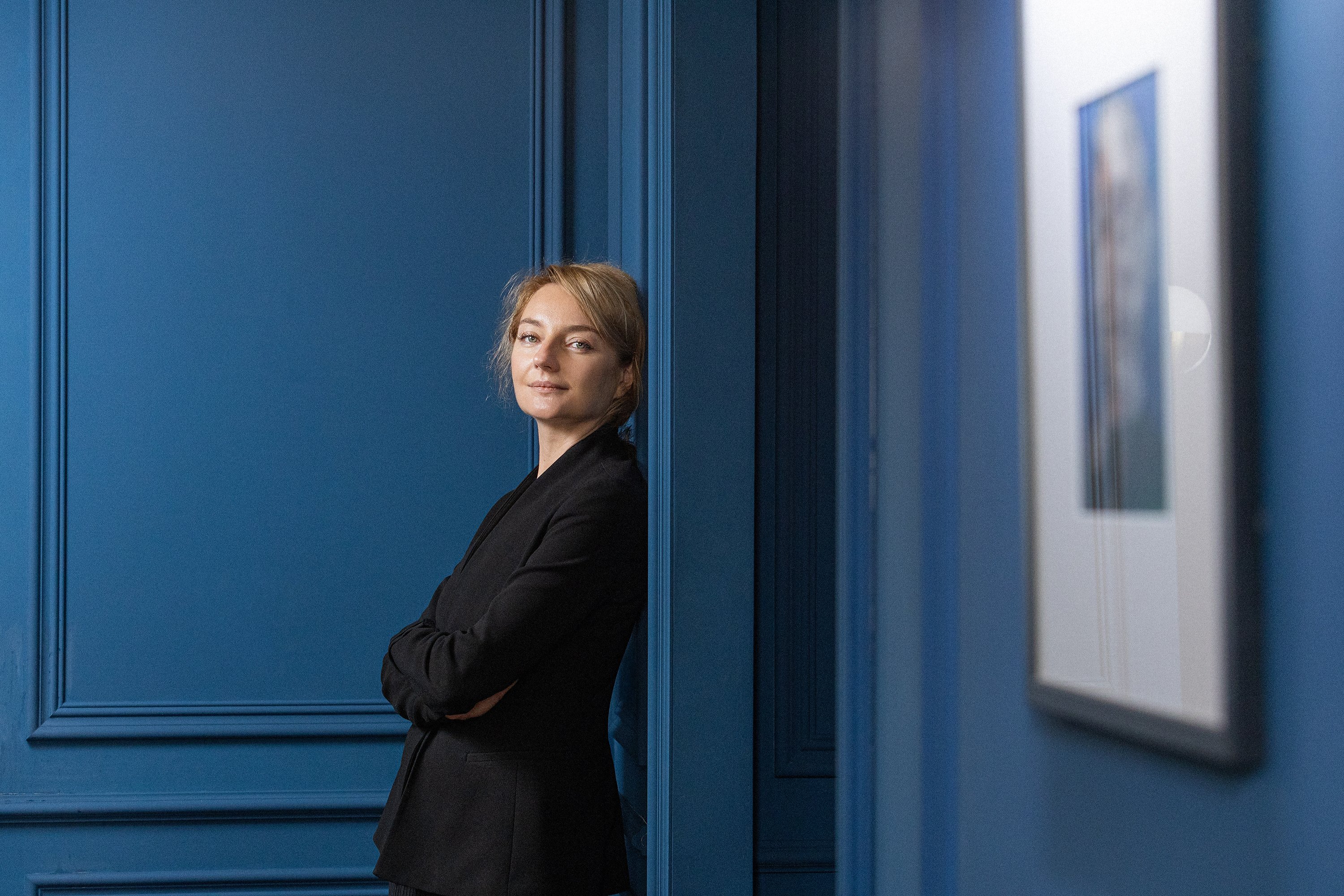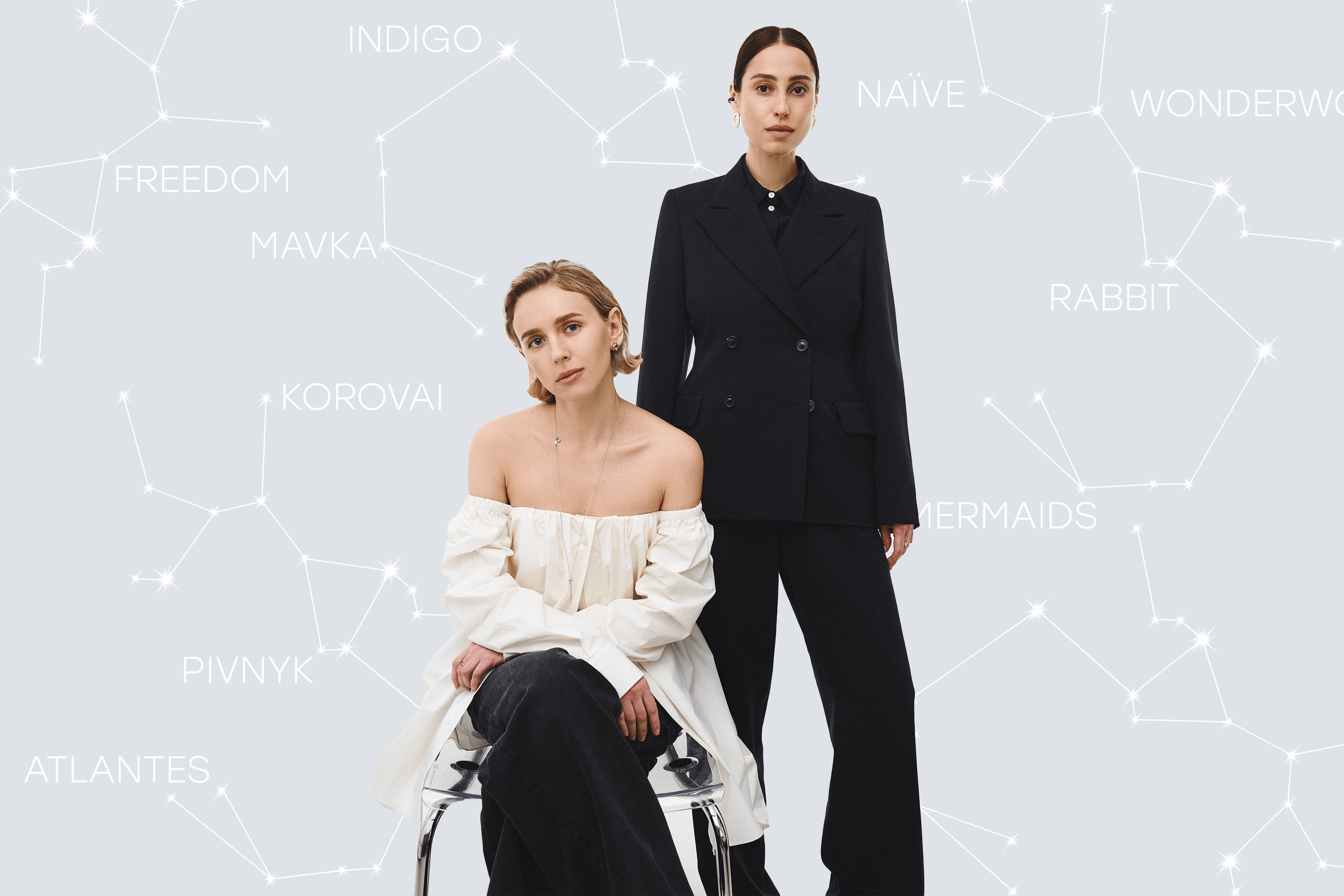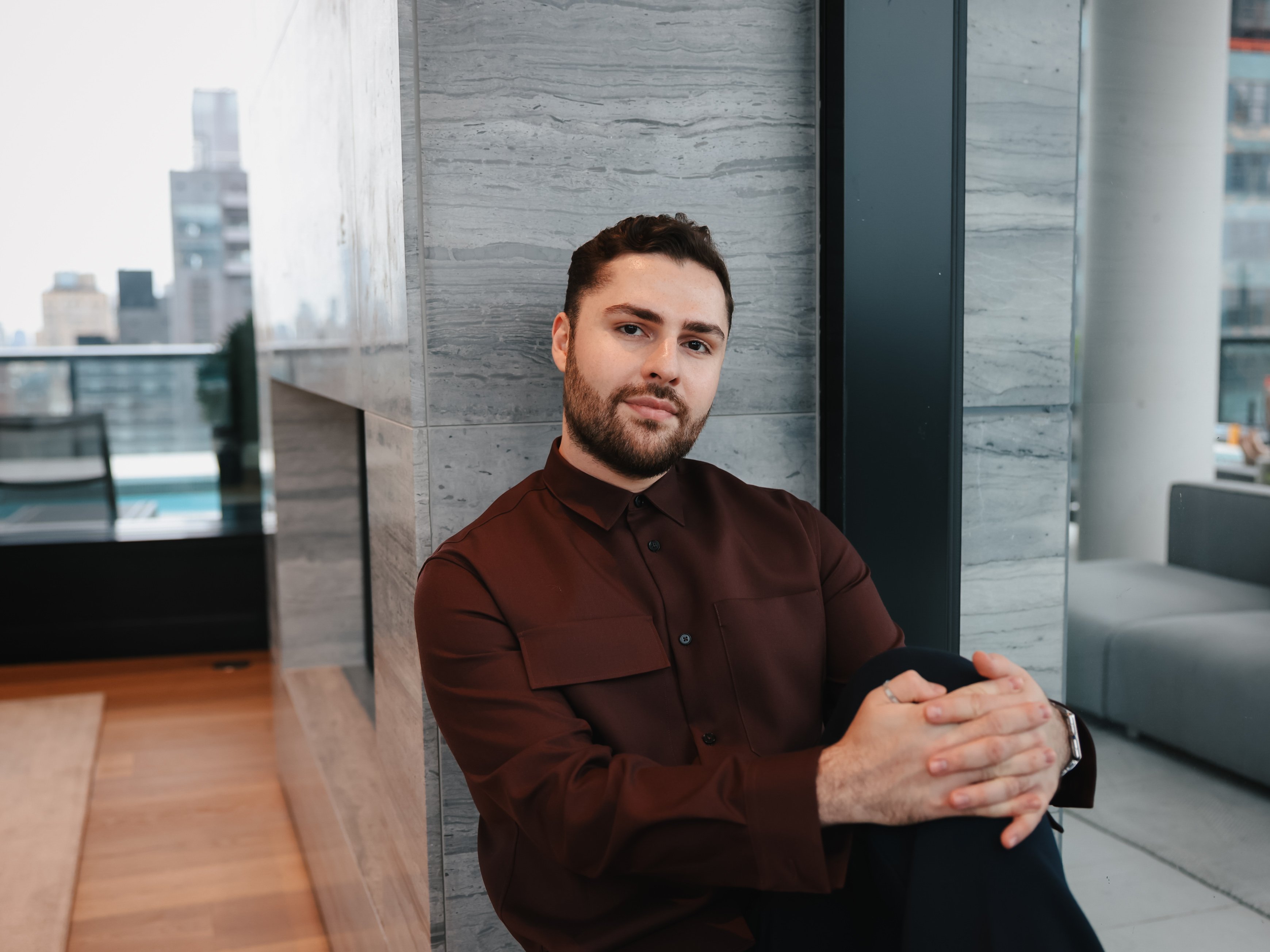In 2017, Pavlo Popko, then a student at the Lviv Academy of Arts, began selling handmade leather accessories on Etsy, the global marketplace for artisans of handcrafted goods. Within three years, one of his products was featured in Etsy’s Christmas gift selection. Daily sales jumped from five to 300 items, and monthly revenue grew from $15,000 to $400,000.
In 2021, Pavlo launched the Poelle brand with signature collections and a clear visual identity. His first project, Pol Leather Studio, remained a small artisanal workshop without pretensions of originality.
In 2022, Pavlo’s friend, IT specialist Petro Lyshak, joined Poelle. He bought a stake, expanded the workshop, and invested $70,000 in equipment. With Petro’s help, production shifted from custom orders to streamlined manufacturing.
Today, Poelle is available at Kyiv’s TSUM department store, in 15 multibrand boutiques across Ukraine, in a boutique in Belgium, and online through the brand’s website in the EU, the UK, and the US.
YBBP journalist Roksana Rublevska spoke with Pavlo Popko and Petro Lyshak about the business’s transformation and its work abroad.
Pavlo, when did you first start making leather accessories?
Pavlo Popko: I’ve been crafting since I was a child, always making things with my grandfather and father. In grade 11, I remember finding my grandmother’s bag in the attic, cutting it apart, and making a knife case from a piece of leather. Later, I started sewing leather wallets and other accessories — makeup bags, pencil cases, and so on. I sold them to friends for around ₴300–400 each.
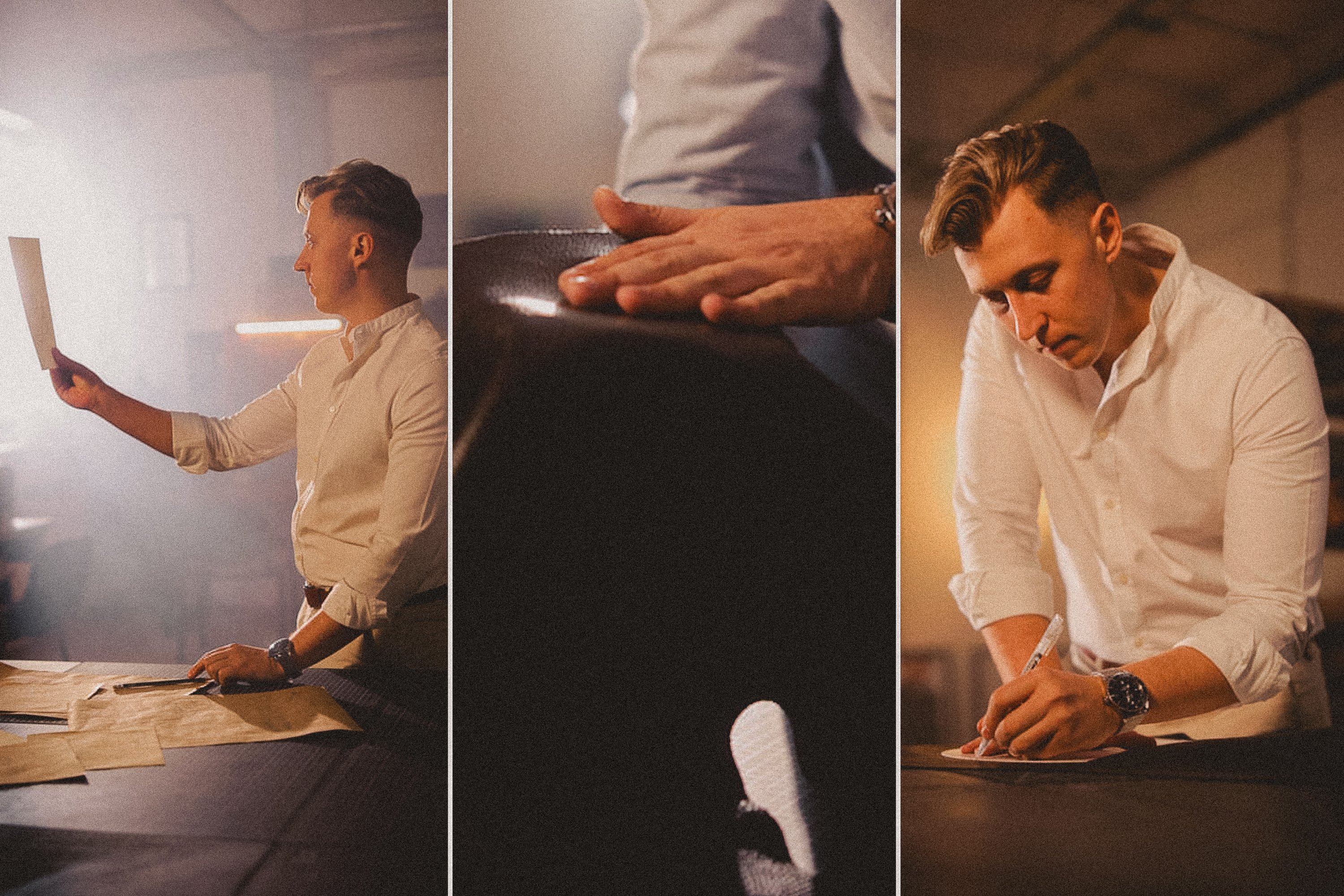
How did your education at the Lviv Academy of Arts influence your hobby?
P.P.: I studied there for just two years, but I learned the most important thing: how a creator thinks, because drawing can be learned anywhere. At the academy, I found a community of creative people to exchange ideas with. I continued making custom wallets to order, and that’s when I realized that design is a language you can use to communicate with the world.
When did you actually start running the business?
P.P.: In 2017, I borrowed $2,000 from my father for materials and a new sewing machine and began selling my own products on Etsy under the name Pol Leather Studio. I personally handled several orders a day, and later collaborated with a few acquaintances. In 2019, I landed a major overseas client, which required temporarily expanding the team to 15 people. We operated out of a 16 m² workshop and handled custom Etsy orders as well as production for that client (designing models, managing manufacturing, and logistics). That’s when I realized we had significant potential and needed to create our own distinct brand.
How did you manage to get featured in an Etsy selection in 2020?
P.P.: Etsy representatives ordered one of our toiletry bags for review and included it in their Christmas gift selection for men. That’s when everything took off: daily sales jumped from five to 300. Within a few weeks, the team had to grow to 50 people, even though our space at the time was only 70 m². Imagine someone opening the platform in November or December and seeing my product among the first recommendations. Naturally, after the holidays, demand decreased, and the team was reduced to eight people.
Did you pay for promotion on Etsy?
P.P.: I never used paid promotion. Etsy is great for beginners because if you have a quality product and know how to present it properly — with professional photos, descriptions, and reviews — the platform generates traffic on its own. We were making beautiful personalized items with embossing or engraving, and customers kept coming back, leaving positive reviews. That was the main form of promotion.
How long did customers usually have to wait for their orders during busy periods?
P.P.: Usually, we shipped products within a few days. Even when orders exceeded 300 a day, the wait never went beyond 10 days. We were able to streamline the process using the assembly-line principle. I had read My Life and Work by Henry Ford, where he describes the efficiency of a model in which each person performs only one operation. We applied that in our production — and it worked. Everyone focused on what they did best. This allowed us to speed up production even during peak periods.
You mentioned seasonality. Was it affecting your revenue?
P.P.: Yes. In 2021, our average monthly revenue reached $400,000, but the Christmas season alone brought in as much as the rest of the year combined.
When you were starting out, what unique value did you think you could bring to the market?
P.P.: I’ve always approached the business as an artist. I personally love quality items, have an artistic vision, and understand how to create them. That’s why I wanted to make durable, minimalist, stylish accessories. What gave me the greatest satisfaction was knowing that at Christmas, around 6,000 people would open our packages and find truly excellent personalized products that would last a long time and bring them joy.
Where did you source your materials, and how does the production process work?
P.P.: We used Crazy Horse–type leather produced in Ukraine. Its quality is on par with Italian or Turkish leather. From the very beginning, we used Japanese YKK zippers, which over 10 years might only wear slightly but would not break.
The process works like this: the leather is delivered to the workshop, inspected by a craftsman, who cuts it into components. Then the edges are thinned, holes are punched, hardware is installed, and stitching lines are marked. Next, the pieces are glued, sewn, and the logo is applied. Finally, the items are packed and shipped to the customer.
At the sample stage, quality is checked by the creative director and product manager. At the sample stage, the creative director and product manager check the quality. After that, we always test the items in everyday use, and the entire batch is inspected for seams, edges, and hardware. Thanks to this process, defects account for less than 0.2% of all orders.
And how did you handle things with clients if any complaints came up?
P.P.: We followed the principle that the client is always right. If something went wrong, we would quickly send a replacement or resolve the issue in the buyer’s favor. Complaints about quality were actually rare — about one in every 500 orders. Most issues were logistical; Ukrposhta sometimes caused unpleasant surprises. For each of these orders, we included a small gift — keychains, key holders, or cardholders. Altogether, this created a picture of customers leaving thousands of five-star reviews.
When did you found the Poelle brand?
P.P.: In 2021. It became a platform for designer collections of women’s bags and belts. My first project, Pol Leather Studio, was more of a small handmade workshop, without claiming to create original designs. By then, I wanted to express myself as an artist and create something truly unique.
Petro, you had been friends with Pavlo for several years before joining Poelle as a co-owner. What responsibilities did you take on?
Petro Lyshak: Just before the full-scale war, Pavlo and I traveled together to Dubai and spent a lot of time discussing the brand’s potential, which at that point was still only his. I could see it had enormous potential, and I also had many ideas for developing it. That’s how we decided to work together. I bought a stake in the business, invested an additional $70,000 in equipment, expanded production space to 370 m², and set up financial controls and warehouse tracking. Since then, we have owned the company 50/50. Pavlo is responsible for the product and creative direction, while I oversee operations, scaling, and the brand’s strategic development.
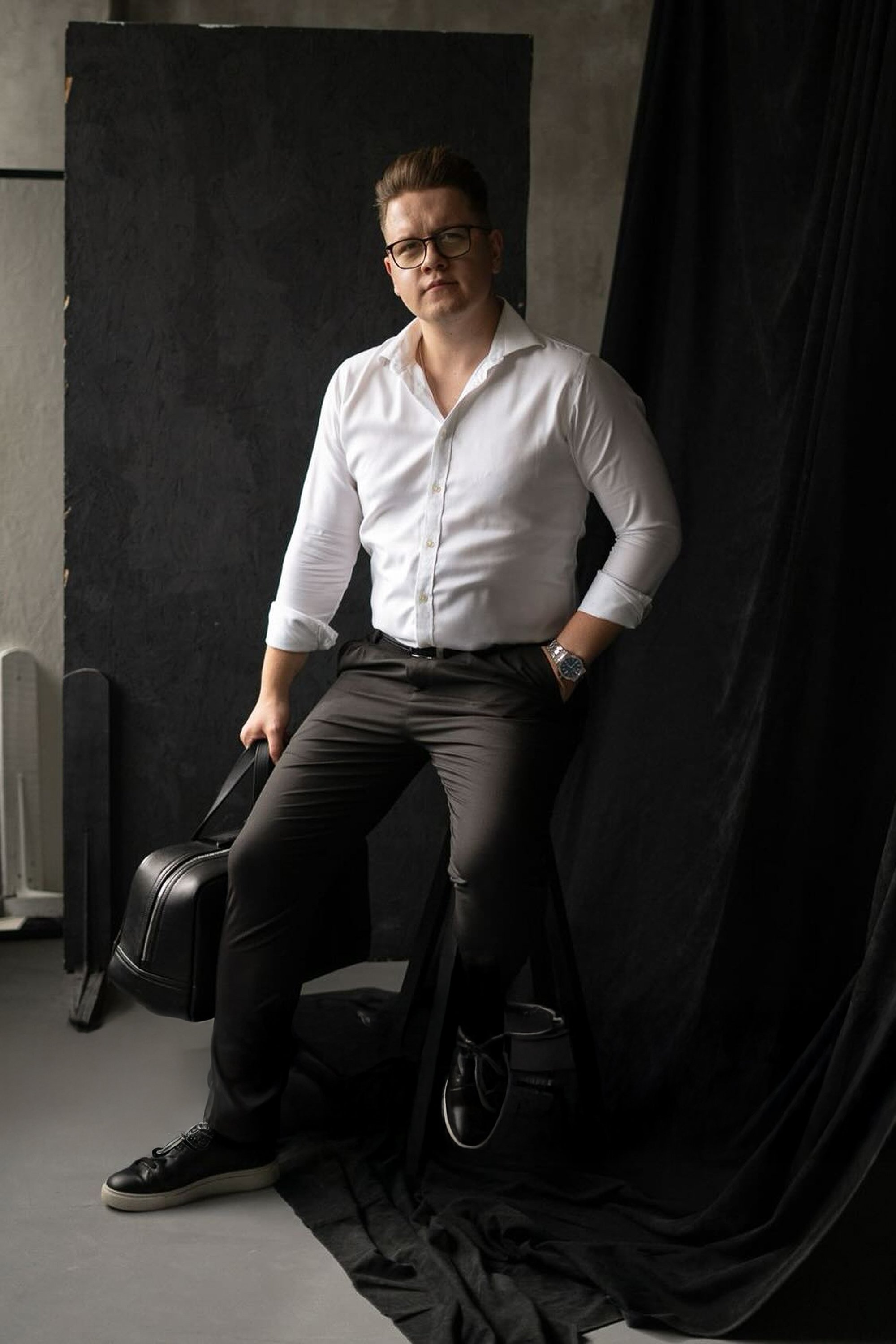
P.P.: Petro reorganized production so we could work with stock rather than just custom orders, and began seeking and negotiating with potential B2B partners.
We decided that bags would be the brand’s flagship products, as they best showcase Poelle’s style, quality, and unique design. This will help build brand recognition. Although we also sell wallets, makeup bags, belts, and scarves. Next, we will expand the product line to include perfumes, clothing, and jewelry, but very slowly and gradually.
Why did you choose this name for the brand?
P.L.: It’s a combination of the words “poetry”, “pelle” — leather, and the French pronoun “elle” — she. We’re talking about the poetry of form, where aesthetics and functionality come together in design.
Which market segment do you operate in?
P.L.: Affordable luxury. This means our products offer the quality and design of luxury brands, but at prices well below those of traditional luxury labels. Our margin isn’t based on brand history or heritage, but on the relevance of our positioning, modern design, and the appealing image we create for customers. Poelle bags start at €300, while comparable products from traditional luxury brands begin at €800.
Pavlo, do you design the bags yourself, or do you have other designers on your team?
P.P.: Yes, I’m the brand’s designer. I have a few assistants: a co-designer we just brought on board, and my assistant Olesya Dariy, a stylist and art director who helps me create the collections. The process goes like this: we gather inspiration boards based on the theme of the collection, then turn them into sketches. I set the tone as the creative director, Olesya brings in market references, and then I review everything and draw the final version, adding personal stories. For example, the Riposo bag was inspired by my childhood memories of seaside vacations. My mom had a hat with a similar wavy shape, and for some reason, it came back to me.
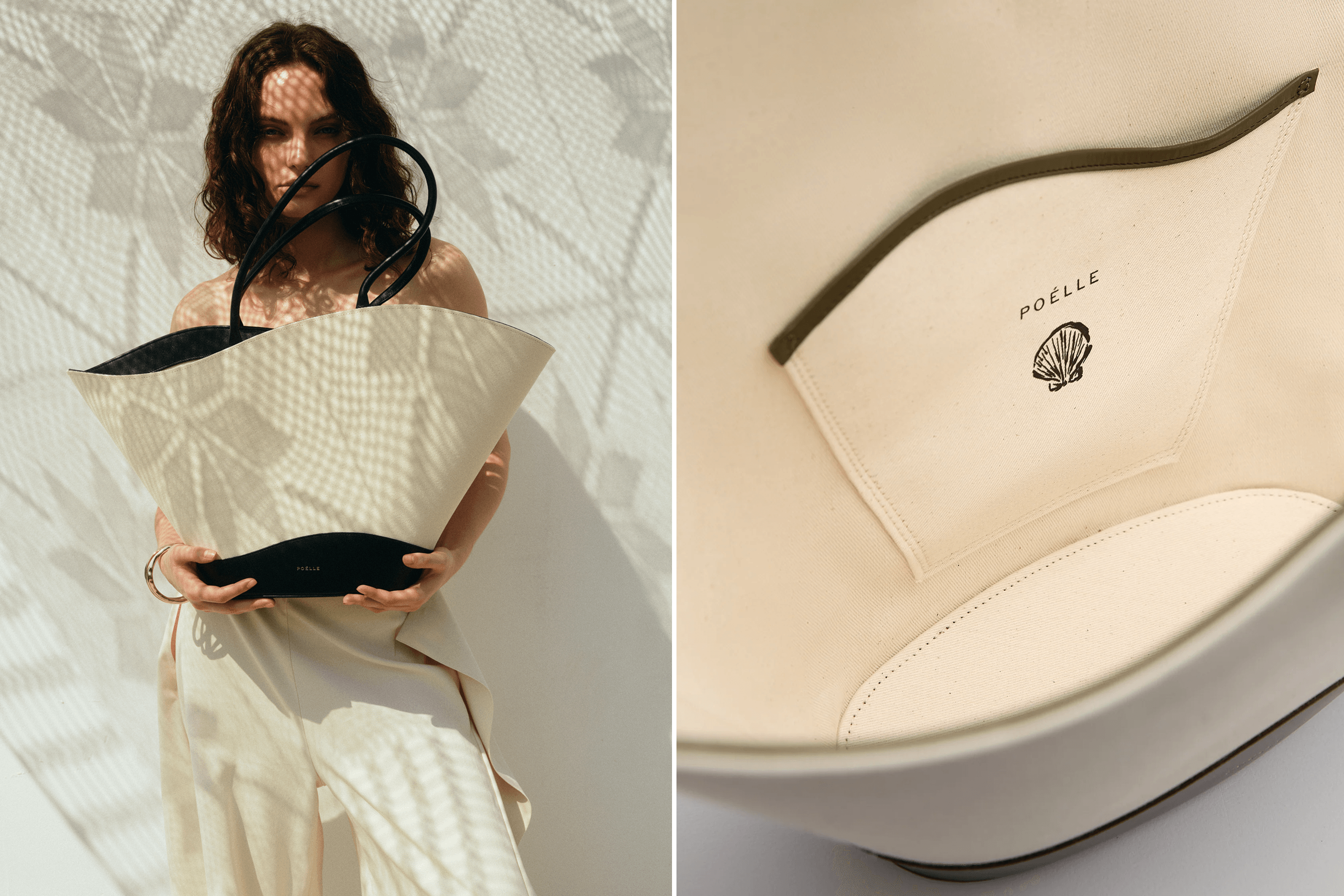
How do you approach trends: do you sense them intuitively, or do you track the market?
P.P.: We track trends and analyze everything happening in the market, but a lot of it is intuitive. For example, we introduced the “melted butter” colour as early as last year, and it only caught on this year.

The Untitled bag in olive was created in January 2025, and the popularity of that color grew just this summer.

Our top seller is a practical classic — the Medium Carolyn shopper in brown shades.

Your annual turnover is $2,000,000. Today, 35% of Poelle’s sales come from international markets, which you entered in 2025. Which countries are these?
P.L.: The U.S. and Polish markets. For this, we registered legal entities, set up logistics, and rented warehouses in Poland and the United States. We chose Poland because of its proximity and our understanding of the local consumer. In October 2024, Pavlo and I attended a B2B exhibition in New York — and it became clear that we had been building the brand specifically for this city, so entering the U.S. was a logical step.
Why New York specifically?
P.L.: It’s the global capital of urbanism. The city shapes modern taste and style, and it’s easier to introduce new brands here because buyers aren’t as tied to established labels as they are in Europe. According to recent news, many luxury brands are produced in China under conditions that violate workers’ rights, which reduces consumer interest in them. Opportunities are now opening up for new players in the accessible luxury segment.
Tell us about your collaboration with Lado Agency. Why did you choose this agency, and what is it doing for your brand in the U.S.?
P.L.: We needed high-quality PR in the U.S., because in fashion, you can’t achieve success without it. We met Lado through a recommendation, and he We met Lado through a recommendation, and he became interested in our brand as an opportunity to create a successful case in the U.S. The agency is now looking for media outlets ready to cover our brand in the U.S. market, identifying brands for potential collaborations, selecting influencers for gifting and partnerships, and seeking celebrities who might wear our pieces on the red carpet.
What is needed to attract clients from the U.S.?
P.L.: Investing additional funds into marketing and brand promotion.
How much does your most expensive bag cost in the U.S.? How do prices differ in Europe and Ukraine?
P.L.: At the moment, it’s the Object №3 bag. It costs $670 in the U.S., while in Ukraine it can be purchased for ₴19,500, roughly $490–530. The price difference comes from logistics, taxes, customs fees, and also currency fluctuations and local delivery costs.

Do you still sell Pol Leather items on Etsy? If so, what share of your business’s revenue comes from those sales?
P.L.: Today, we sell only Pol Leather accessories on Etsy, and they account for less than 3% of our sales. We are preparing to sell it and focus fully on developing Poelle.
What does Poelle’s business infrastructure look like now?
P.P.: Poelle’s headquarters, warehouse, and production are in Horodok, in the Lviv region. That’s where our administrative hub is — developers, technologists, and accounting staff work there. Poelle has warehouses in Poland and the U.S., and each market is managed through a a separate CRM system.
How much do you sell online versus offline?
P.L.: About 80% of our sales come through our website, and the rest are offline through B2B partners. In Ukraine, aside from TSUM, our products are available in stores in Lviv, Odesa, Vinnytsia, Lutsk, Ternopil, and Chernivtsi. Currently, online sales dominate thanks to our long-standing digital expertise, dating back to our Etsy days.
Which U.S. and European retailers are you currently considering as potential partners for Poelle? What criteria do you use to choose them?
P.L.: We’re negotiating with both online platforms and brick-and-mortar boutiques. Our main priority is to find partners who share our brand’s values and aesthetic. We want our products to be accessible to many, while maintaining high quality. Our first retailer outside Ukraine was the Belgian multi-brand store Objeky, which approached us via its Ukrainian owner.
In the U.S., we see ourselves in Saks Fifth Avenue and Bloomingdale’s. In the U.K., — Net-a-Porter, Selfridges, and Harrods. In Europe, for example, Galeries Lafayette, as well as online platforms that operate across multiple countries. It’s important for us to be present where prestige meets our target audience, without changing Poelle’s positioning.
In 2024, the budget for promoting the collection was around $28,000–30,000 per year, and now it has risen to $25,000 per month. Are these expenses justified?
P.L.: Yes. Our success in the Ukrainian market has shown that only increasing the budget allows us to grow sales abroad.
What advantages and risks do you see in owning your own production versus working with contract manufacturers?
P.L.: Higher margins and direct access to the end customer, which gives us control over pricing and sales. The risks of contract manufacturing include constant comparison with competitors and limited margins. Owning production lowers these risks, but it does require greater management oversight.
Do you plan to bring in investors? If so, what would you offer them?
P.L.: We’re interested in investors with experience in the fashion industry or retail who can strengthen us with business expertise and connections. For a strategic investor like that, we’re open to selling a stake in the company. As for the terms: the simplest model would be an investment with a guaranteed return. As a product-based business, we constantly need to increase working capital to expand production capacity. Also, the additional funds allow us to test products and markets, but everything requires investment.
You focus exclusively on a female audience. How would you describe your typical customer?
P.P.: Our customer is a modern urban woman, a millennial between 25 and 40 years old. She is building her career, has a family, or is actively developing her social life. She’s a woman who wants to express her individuality — which is why our slogan is: “Belong to yourself, inspire others.”
P.L.: She is open to the world, interested in fashion, but doesn’t want “flashy luxury.” And of course, we’re already looking at Generation Alpha, which is growing up and becoming part of our target audience.
What marketing channels are the most effective for you?
P.L.: Paid advertising: Meta (Facebook, Instagram), Google, TikTok. In addition, working with bloggers and opinion leaders is very important, as it builds trust in the brand: clients see that our bags are worn by well-known and respected people who inspire.
What is the brand’s long-term strategy?
P.L.: By 2030, we aim to become a brand with a global presence. We want to create a unique product where luxury intersects with fashion trends, attract investment, and expand our B2B operations. Our goal is to reach $100 million in revenue within five years.
We are keen to expand our presence in European markets (the U.K., France, Germany) as well as in Asia. We’re already in talks with local distributors there. Consumers in those regions are becoming wealthier, open to new brands, and value European luxury, while also being ready to embrace fresh ideas. That’s why our priorities include Japan, Korea, China, Taiwan, and Singapore.
Petro, one last question — about education. In June 2025, you completed the Stanford Ignite Ukraine program. What did you learn there, and does it help you expand into international markets?
P.L.: First, how to present an idea effectively to investors. Second, entrepreneurial financial literacy: how to read financial statements, understand how they’re structured in large corporations, and know what to focus on. Third, how to find unique combinations of ideas that can later become proprietary know-how. In fashion, it’s crucial to constantly understand your audience: what drives them, what they believe in, and what they want right now. Today, luxury is being significantly devalued.
Consumers are disappointed with the quality and production practices of major brands. That’s why we already have a plan to reach $100 million in revenue in five years’ time. In short, the strategy is built around three directions: creating innovative products at the intersection of luxury and fashion trends, expanding into international markets, and attracting external investment.

